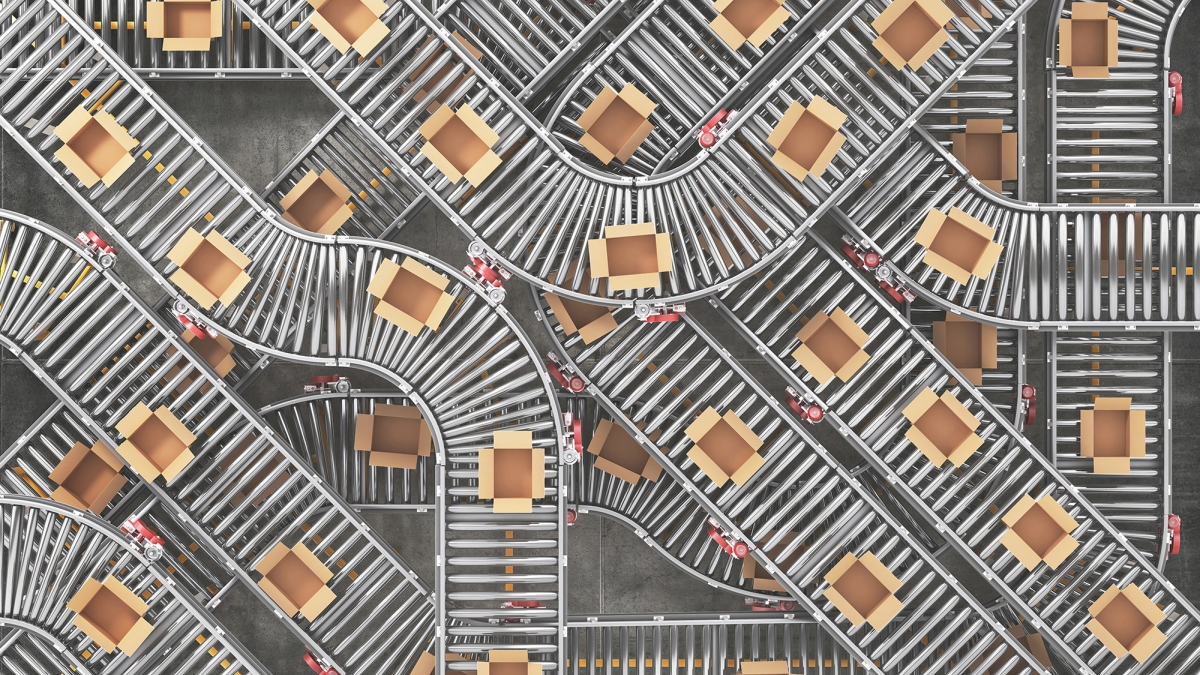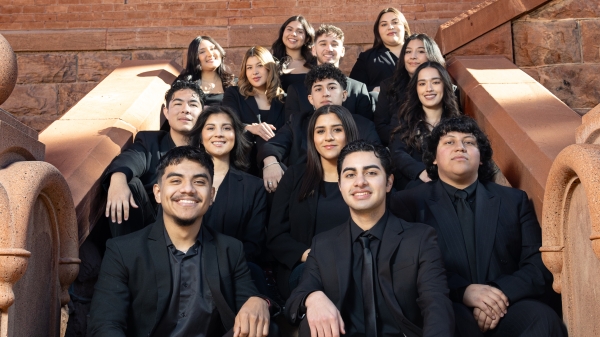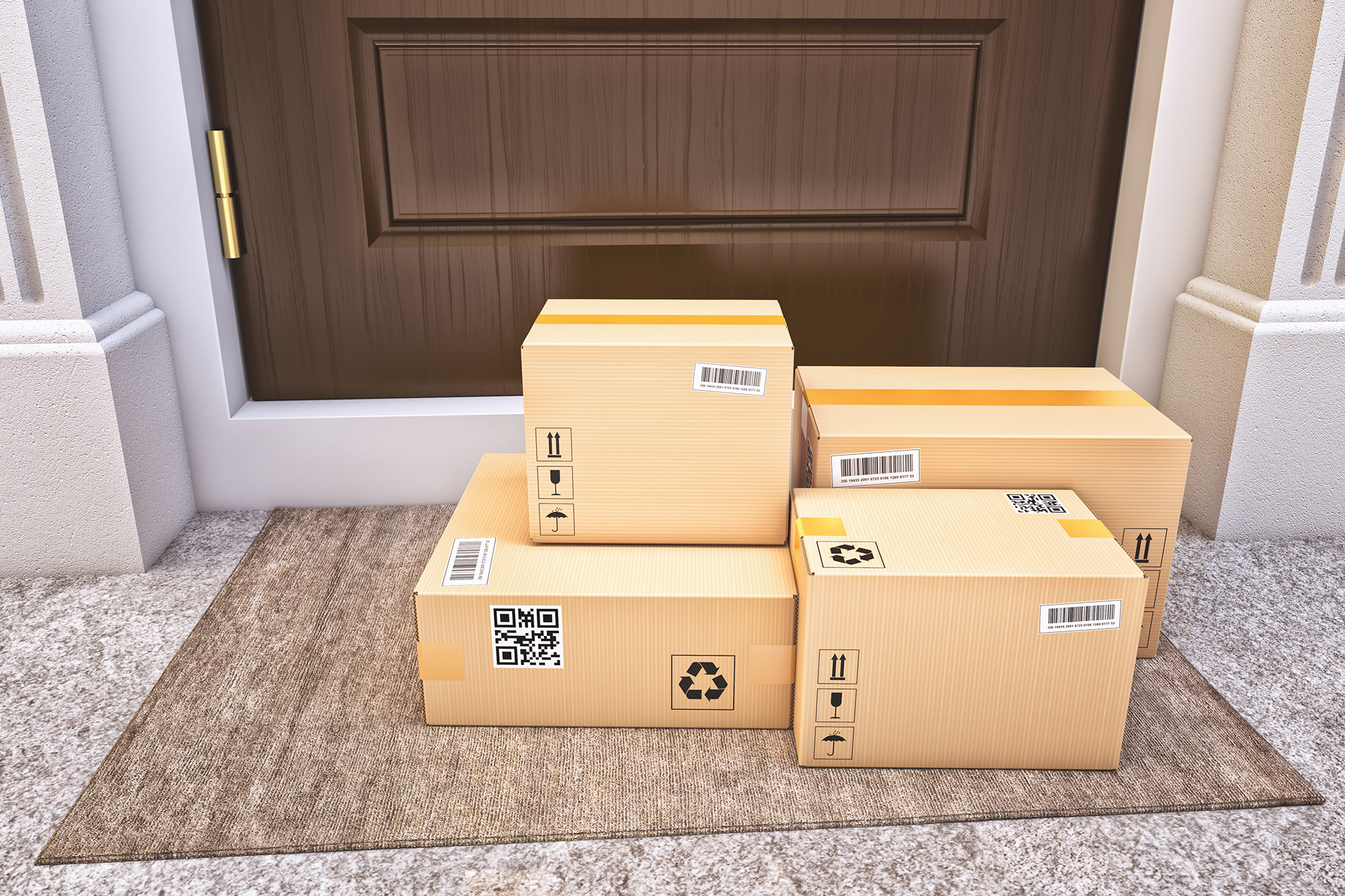Building smarter supply chains
W. P. Carey experts think big while supporting local businesses with their worldwide pipelines

Editor's note: This story originally appeared in the summer 2020 issue of ASU Thrive magazine.
In mid-May, two months into social distancing and lockdowns, Arizona had yet to return to normal product availability. While supply chains have since loosened, some impacts may linger for a long time.
Even though the world has experienced supply chain disruptions from natural disasters and from other viruses in the past, COVID-19 is an “unprecedented global event” that has left many supply chains in limbo, said Mohan Gopalakrishnan, supply chain chair in the W. P. Carey School of Business at Arizona State University. It was also the first time many of us remember seeing bare shelves and stores entirely out of some food products and toilet paper.
“There are some really unique things about this pandemic,” Gopalakrishnan said. “Unlike Ebola, which was restricted to one area, this has quickly spread across the globe.”
Disrupting demand
Manufacturers and distributors have had to contend with sudden fluctuations in supply and demand. Supply chains are typically designed to meet either commercial or consumer demands — via different means — and they tend to trend in the same direction. In the pandemic, they’ve gone in opposite directions. As demands increased in the consumer market, demand dried up in the commercial market nearly overnight in mid-March as schools, restaurants, hotels and big facilities shut down.
“Supply chains weren’t prepared to immediately shift gears, which left excess in commercial markets with shortages in the consumer area. It’s why you saw a lot of food being wasted and farmers being forced to dump milk,” Gopalakrishnan said.
Yet there have been positive signs. Arizona’s prominence as a distribution hub continues to grow as consumers increase their online shopping. In addition, increased consumption of fruit to enhance immune systems has driven the demand for orange juice and benefited the state’s citrus industry. Retail sales of orange juice rose nearly 40% for the month ended March 2020, according to Nielsen data.
“It’s having a big impact on Arizona’s citrus industry and futures,” Gopalakrishnan said.
Every package we order starts out as materials that become components, then manufactured goods that go on to delivery. The chain of events and connections has changed. Photo by iStock
Complex global markets
The complexity of the global supply chain, and China’s crucial role in it, has amplified the pandemic’s effects in some markets like electronics, food products and pharmaceuticals. While China contributed only 3% to global GDP in 2003, it now contributes up to 20%, Gopalakrishnan said.
One supply chain that constricted globally is personal protective equipment. Although production of N95 respirator masks typically averages 40 million per month in the United States, demand skyrocketed to 300 million per month during the pandemic, Gopalakrishnan said. The worldwide shortage led many countries to hang on to their own products, and as of late April, at least 80 counties limited the export of PPE, according to the World Trade Organization.
“That kind of nationalistic behavior further restricted the availability of essential gear,” Gopalakrishnan said.
Many companies started to fill the void by adjusting their supply chains and manufacturing operations. Honeywell Aerospace partially repurposed its Phoenix manufacturing facility in late-March to produce N95 masks to supply the Strategic National Stockpile, a move the company said would create 500 new jobs. Local innovators, like ASU, created the ASU PPE Response Network to link health care providers with 3D printers, including all of ASU’s, in order to produce PPE gear locally close to where it will be used, and to distribute it quickly.
End users and companies also have been innovating to extend the life of products through refurbishing and cleaning. For instance, ASU created a way to sanitize 30 PPE masks in 5-10 minutes each. Thirty percent of ventilator capacity is now coming from refurbished and previously unused machines, Gopalakrishnan said.
A new world
Gopalakrishnan will do further research this summer about how these companies have repurposed their supply chains, the impact it has had and what kind of structural changes we may see in the future to avoid supply chain disruptions.
Even as the world starts to reopen, Gopalakrishnan believes many countries will place a stronger focus on supply chain resiliency, something that could lead to “a battle of nationalism vs. globalism.”
“There is suddenly going to be a little step backwards in globalism. Some companies may want to source and (manufacture )closer to home,” Gopalakrishnan said.
MORE: Watch videos on building your supply chain resilience at news.wpcarey.asu.edu.
Written by Craig Guillot
Top photo: iStock
More Business and entrepreneurship

California roots, global impact: Thunderbird at ASU grad's journey in global management
Editor's note: This story is part of a series of profiles of notable spring 2024 graduates. Lake Forest, California, native Kyle Kay was attracted to Thunderbird School of Global Management at…

ASU student entrepreneurs win cash investments for ventures at Demo Day
Several Arizona State University student entrepreneurs who won big cash investments for their ventures on Saturday expressed gratitude not only for the money but also the support they found in…

Hispanic Business Students Association marks half a century of impact, growth
When Michelle Macias, a native of Yuma, Arizona, became a business entrepreneurship and management student at Arizona State University in 2020, she was three hours away from home and stuck in her…
